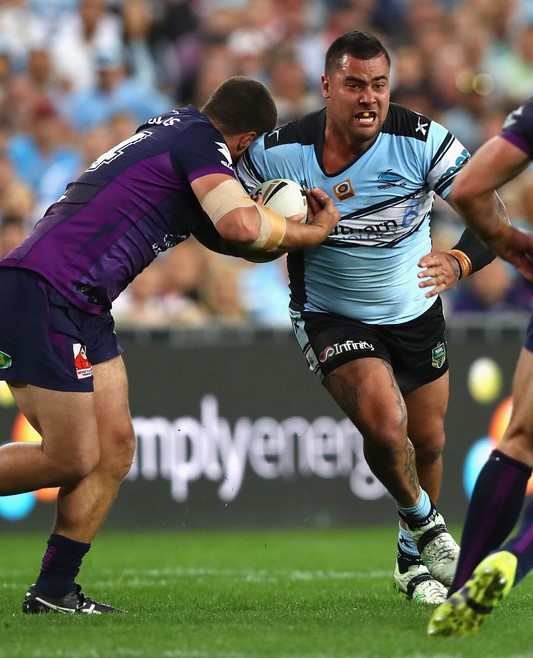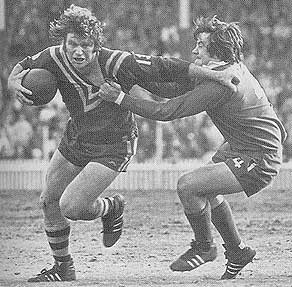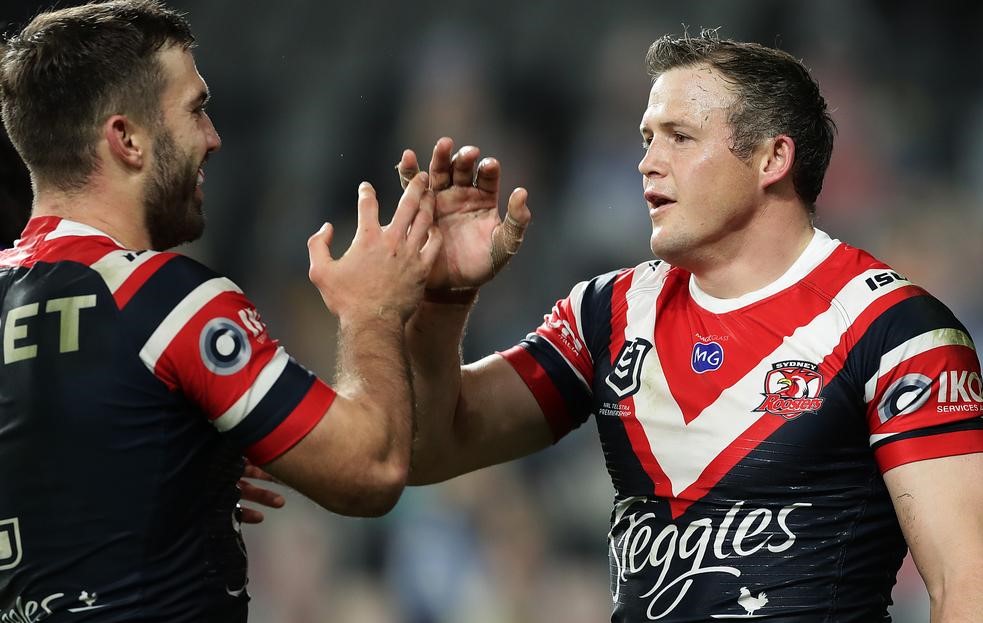In recent weeks I have noticed that some of the more flamboyant National Rugby League teams have been breaking the unwritten rule that, when in possession deep in their own half of the field, big forwards must make “hit ups” to gain field position. Teams like Parramatta and Eastern Suburbs have occasionally taken the riskier option of making a few passes to get the ball away from the ruck in the hope of gaining more territory than the traditional one pass from the dummy half “hit up” method. It’s been working to. Their success made me wonder about the relative effectiveness of the “hit up” (or running game as they call it in NFL) and other strategies like passing the ball several times (the passing game in NFL, I guess). I am no statistician… nor for that matter an expert Rugby League analyst… but my sitting down and recording the yardage gains from “hit ups” and alternative plays from six recent games was revealing and interesting.

In my stats I only counted plays where the ball was kept in hand (no kick plays) and I didn’t count any plays where a team was in possession within ten meters of their opponents goal line (in such cases the defending opponents are not back ten meters so final ten meter plays should not be directly compared with plays where the defenders are the full ten meters back). I also included the dummy half run as an alternative play rather than a “hit up”.
Passing game twice as effective as the “hit up”
Across six games and twelve halves the outcomes were remarkably consistent (despite some games being relatively low scoring arm-wrestles and other games being fast-paced open games and, therefore, having a different dynamic). When the average was taken over the six games combined, and twelve halves combined the result was again similar. Over all games, on average, the “hit up” gained its team seven meters. Over all games, on average, alternative (non-kicking) methods, gained its team fourteen meters. This statistic was true in every game individually as well as across the total six games. In other words, the passing game, in meters, was twice as effective as the running game. The only slight exception was the second half between Manly and Canberra, a few weeks ago, when the passing game only achieved an average of eleven meters gain for each team and the running game achieved seven. The passing game still bettered the running game… but not by quite as much as in the first half of that game and in the other games recorded.
I’m not trying to discount the importance of the running game. One only has to look at NRL Grand Finals over the last fifty years to realize that ferocious “hit ups” have swung competitions. Running games by Andrew Fifita, Sam Burgess and Brent Kite in the current decade and by John O’Neill, in multiple grand finals back in the seventies, demonstrate just how devastating a great running game can be in terms of gaining yardage, in terms of breaking the hearts of opposition defences and in terms of setting up try-scoring opportunities. I reckon I am the only NRL supporter whose two favorite teams are Souths and Manly. The reason I could love such two different clubs? I loved John O’Neill’s “hit ups”. As a young’un I would sit on the hill at either Brooky or Redfern and scream “give it to Lurch!” I didn’t give a rat’s arse about Bobby Fulton or Mike Cleary!

However, the stats taken from recent games do seem to indicate that the running game and passing game should be used more intelligently than the predominant “coaching rule-book” mentality that says one must execute a “hit up” on the first, second and third plays of a set and then (if successful yardage has been made on the first three plays) several passes can be made away from the ruck on the fourth and fifth plays. It seems to me that a “hit up” on the first and second tackle of a set, plays directly into the hands of the defending opponent because the “hit up” is exactly what they are expecting… and what they are preparing for.
Isn’t doing the expected unwise?
To do, on every set, precisely what your opponent wants you to do, and knows you will do, seems unwise to me. Surely, occasionally doing what they don’t expect you to do, makes sense. While it’s true that with every pass there is a slightly greater risk, I would argue that calculated risk taking, in sport, is a good thing. Besides, if a team is well-coached and well-drilled at the strategies they are going to employ, then risk is minimized. If a team knows that they are going to pass the ball wide on the first play (and they have rehearsed the strategy) the risk is low.
The “hit up”, when executed well by a big, fast, and ferocious forward is a beautiful thing. Not only does it potentially gain substantial meters for a team, but it has the additional benefit of drawing in multiple defenders as well as exhausting the defensive energies of opposition players. Rugby league teams with powerful and tough running forwards can rip the heart out of the defensive capabilities of their opponents. Even so, a passing game, statistically, is twice as effective in terms of meters gained than a running game. The other statistic I didn’t mention earlier was that, over the games I recorded, the passing game is only used half as much! The onus is on coaches to teach their teams to employ the passing game more often, not only for the extra meters to be gained but for the surprise effect it can have on their opponent.


Leave a Reply